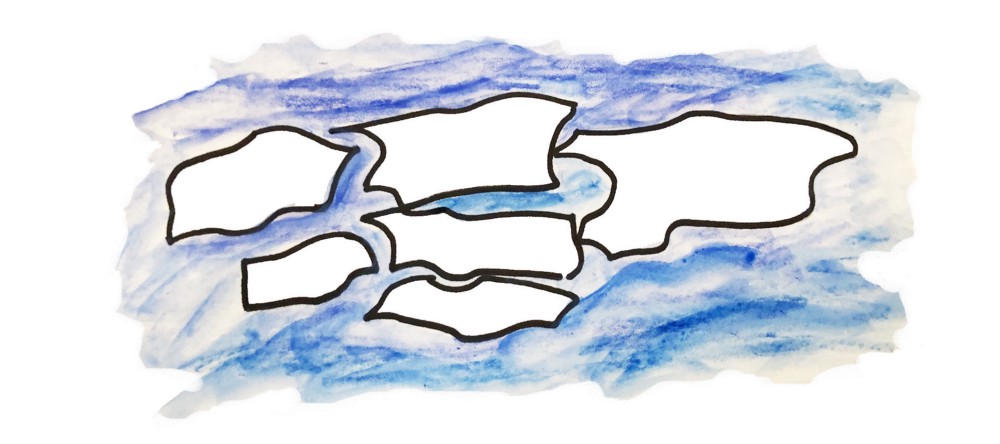Our most popular recommendations for team-bonding, regardless of the distance separating your remote employees.

Believe me when I tell you that I adore running a remote company. It’s enabled me to hire and work with folks I could’ve never have hired locally. It’s helped me work with fewer distractions and greater focus. It’s given me more flexibility to see my family and spend time on side-hobbies that bring me joy… I could go on 🙂
But, I’ll admit: Being geographically disparate can also be isolating. As a remote company ourselves at Know Your Team, we don’t pretend that there are zero difficulties to running a remote team. There are quite a few — and one of the biggest is making team members feel welcome and connected to the company when they live on the other side of the country.
Think about the last time you started a new job. Do you recall feeling overwhelmed or disconnected from your coworkers? Now imagine that you’re facing all the same pressures and uncertainty but from a few hundred (or thousand) miles away.
For all the upsides to remote work, those benefits can be hampered by the loneliness that some folks can feel if they don’t get to interact with other team members on a regular basis.
Here are some tips for creating great icebreakers to help build a better sense of connection within your remote teams:
Ditch the dull general questions in exchange for specific questions.
How many times have you been asked, “What do you like to do on weekends?” or “What are your hobbies?” Eye roll. So many times. The questions feel rote, so the answers become rote. Just as when you’re seeking out meaningful feedback about the company, you’ll want to ask meaningful social questions to get meaningful social responses, too. Unsure where to start? Check out the 25 specific best icebreaker questions to ask.
Get folks face-to-face when you can.
Where were you the last time you participated in an icebreaker activity? It probably wasn’t from your home office. Just like in-office icebreakers, remote teams’ icebreaker conversations should happen via video chat, or (ideally) in person at a company retreat. One of our remote clients, Balsamiq, is known for their all-team retreats that focus getting everyone, face-to-face together to have a good time.
Schedule in the time for socialization.
Nothing happens unless you carve out the time to do it. That’s something Paul Farnell, co-founder of Litmus (another one of our customers), emphasize. He’s said that you have to “make time for socialization.” At Litmus, he describes how “a few times a year, we have company get-togethers and smaller teams meet in-person more often. Week to week, we get Coworker Coffees, drink beers on Skype, and play video games online. And we invite local employees to the office every Thursday.” Schedule in time for folks to break the ice — or else it just won’t happen.
Assign a buddy, and switch it up.
Another way to keep icebreakers feeling fresh, especially in a remote team, is to switch up who is getting to interact with who on your team. At Help Scout, another client of ours, they organize 15–30 minute coffee breaks between randomly assigned team members called Fikas. By assigning someone a buddy for a period of time, you take the hard work (and sometimes awkwardness) of leaving it up to the employees to figure out who they should get to know better. And, switching up the assignments keeps the getting-to-know-you process from becoming stale.
Keep it light.
Icebreakers are supposed to be fun — so don’t overthink them, or be too intent on “this needs to build trust in my team.” A overly forced icebreaker is never fun. Rather, reflect on your team’s personalities and interest, and consider how you might give people a reason to laugh, joke, and feel a bit more connected with one another. The best leaders know that injecting some levity in an otherwise intense work week can make a big difference. A light question such as, “What’s your favorite breakfast cereal?” yields surprising levels of engagement.
While team icebreakers can seem like a “nice to have,” in a remote team they are “must-haves.” Since your team isn’t interacting face-to-face every week, the miscommunication, trust issues, and poor team dynamics that can bubble up are only exacerbated if you’re not findings ways for your team to connect regularly. So give one or two of these tips a try, and remember how beneficial team-building icebreakers can be for a remote team.
Know Your Team is software that helps you to become a better remote manager. We help you run effective one-on-one meetings, get honest feedback, share team progress, and build team rapport. Try Know Your Team for free, yourself, today.
Additionally, be sure to watch our 60-minute online training on “How to Manage a Remote Team Well.” In this session, our CEO Claire Lew covers best practices on communication, collaboration, and performance management in remote teams, based on data collected over the past 6 years working with 15,000+ people.




